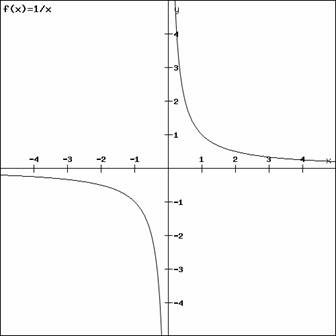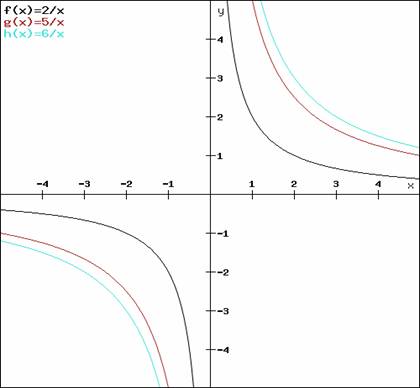A reciprocal function is the one which produces the multiplicative inverse for a given input value. It is represented
by f(x) = 1/x.
Let us plot the function
x |
-2 |
-1 |
0 |
1 |
2 |
3 |
4 |
f(x)=1/x |
-0.5 |
-1 |
- |
1.000 |
0.500 |
0.333 |
0.250 |

The reciprocal function can be extended to the function by multiplying the basic function with a constant f(x) = a/x.
Let us plot the function and observe the changes with change in the parameter 'a'.
X |
-3 |
-2 |
-1 |
0 |
1 |
2 |
3 |
f(x)= 2/x |
-0.667 |
-1 |
-2 |
- |
2 |
1 |
0.667 |
g(x)=5/x |
-1.667 |
-2.5 |
-5 |
- |
5 |
2.5 |
1.667 |
h(x)=6/x |
-2 |
-3 |
-6 |
- |
6 |
3 |
2 |

As we observe in the graph above, we can say that as the value of "a" increases, the plot moves away from the
origin.